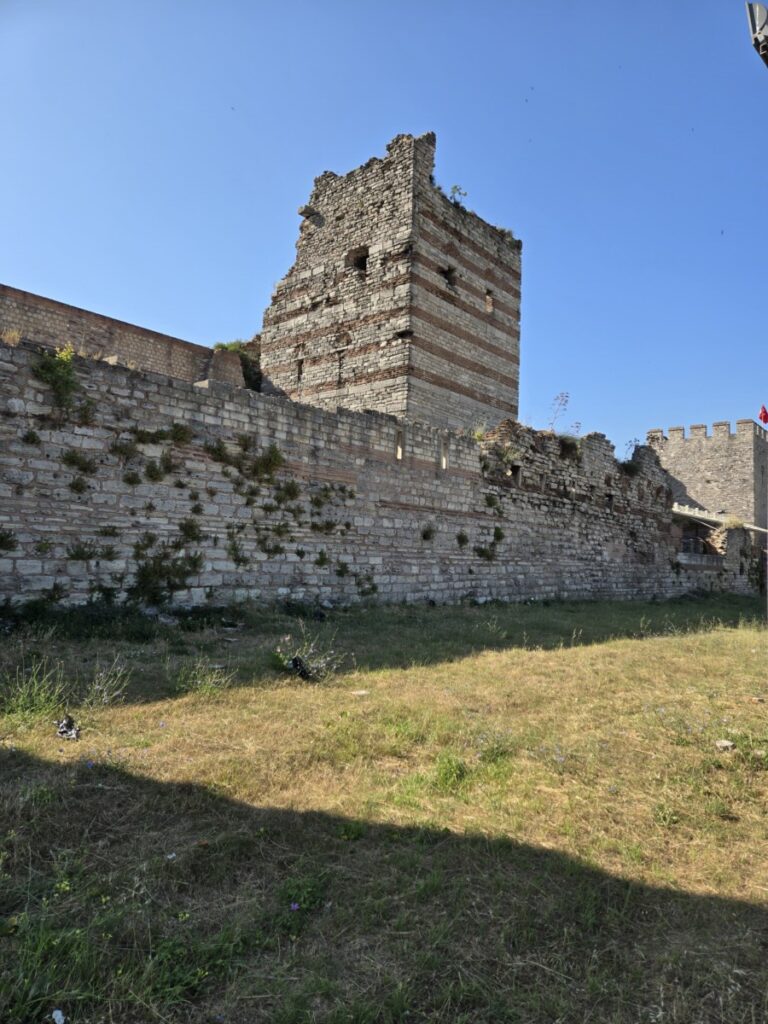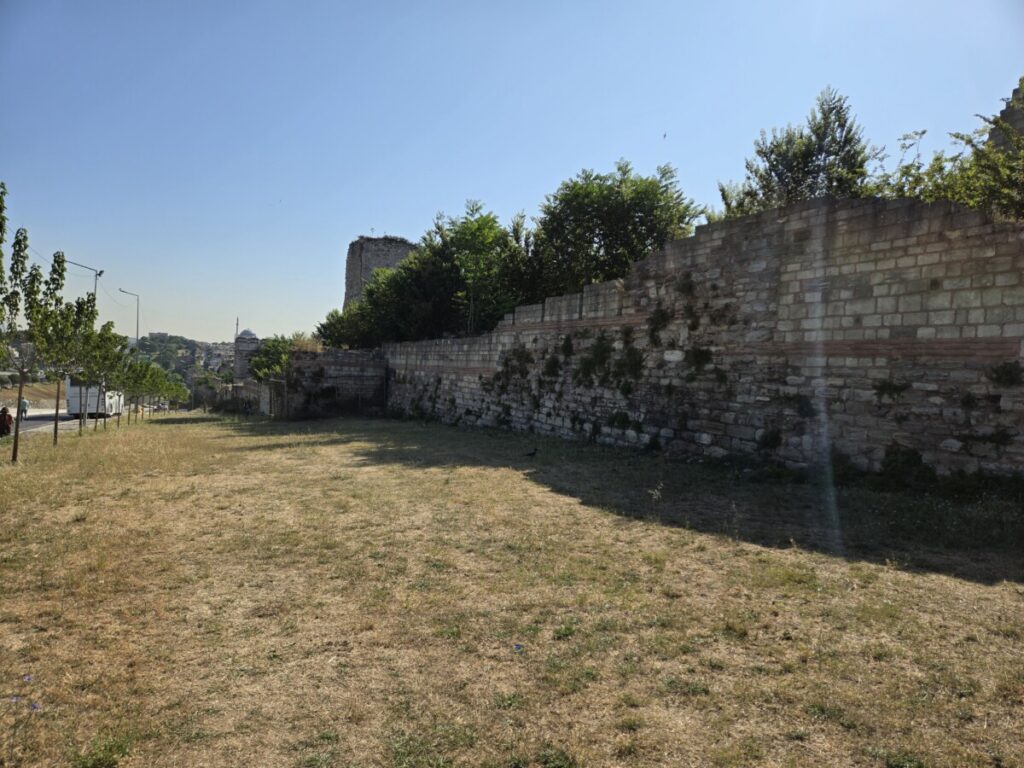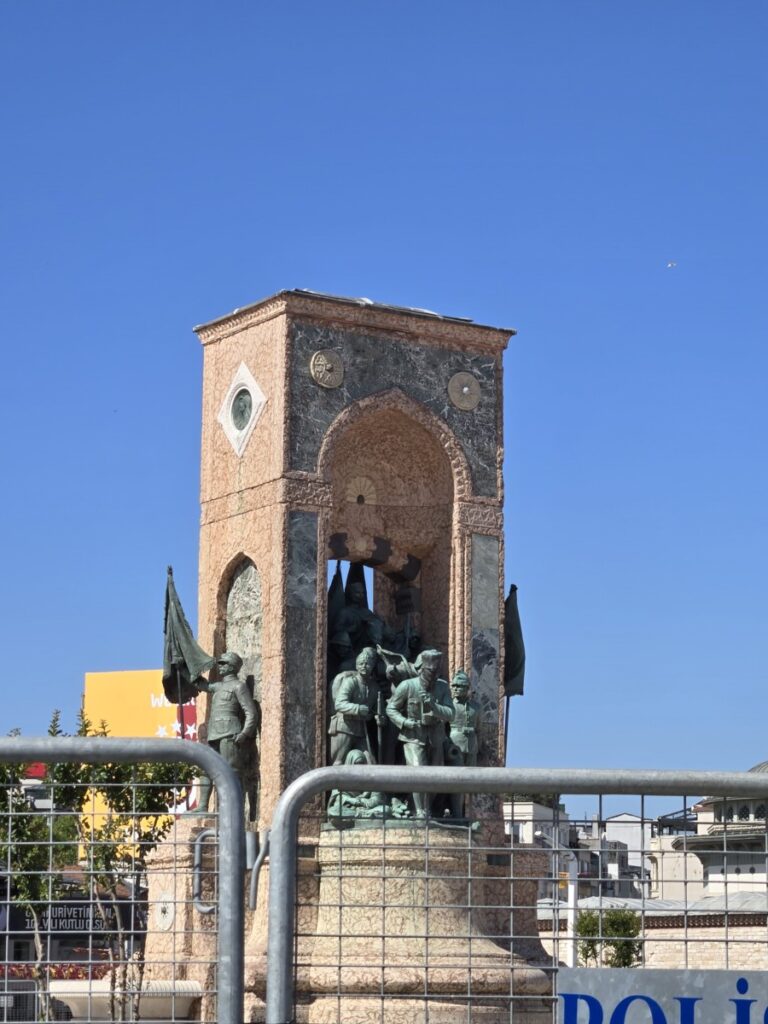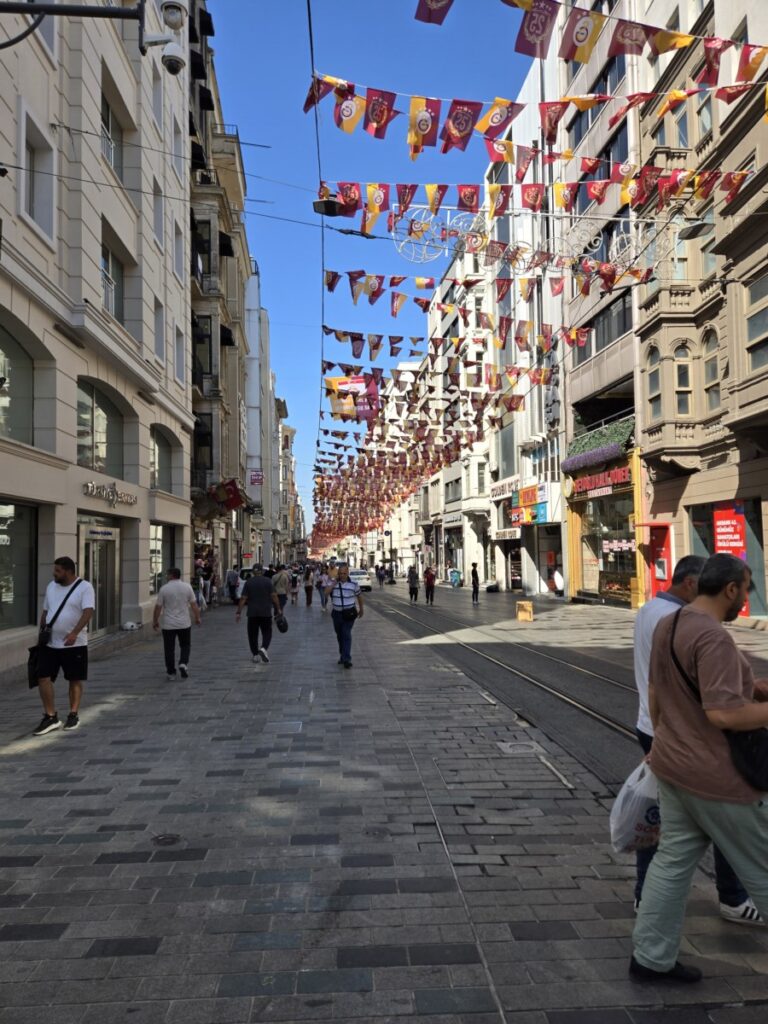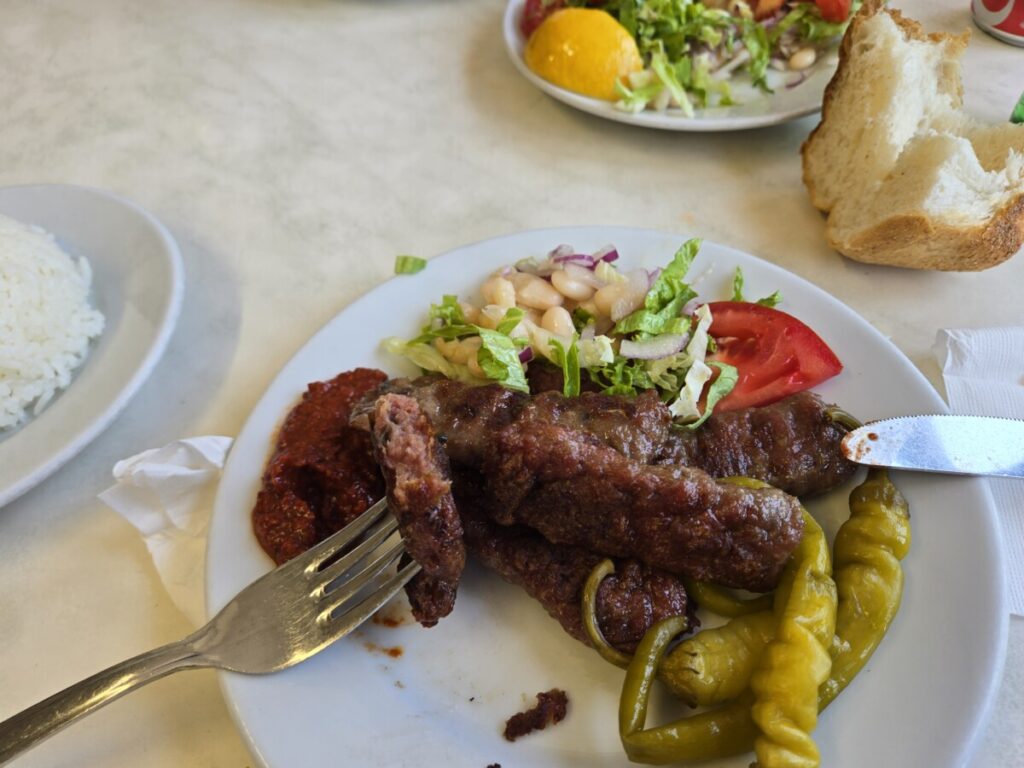I had allowed two more days in Istanbul just in case any followup with the client was needed. However, it did not appear that that was going to be required.
Rather – the client promised to follow up with me! One of the folks at the company I was visiting promised to meet me the following afternoon to show me another great Turkish meal and another of the big historical sites I hadn’t made it into on Sunday.
I had the morning open, however, and I decided to start by going to visit the Theodosian walls.
The city of Constantinople was established by the emperor Constantine in the 300s, when he moved the primary capital of the Roman empire. In the 400s, during the reign of Theodosius a set of incredibly formidable walls was erected to protect the city. How formidable? Well, quite a bit of them are still standing today.
Perhaps more impressively, the walls kept the city safe for nearly a millennium. Only the 4th Crusade in 1204 and the Ottomans in 1453 were able to take the city by force.
Without these walls, the Byzantine empire wouldn’t have stood for as long as it did as the gateway between east and west, and European and middle eastern history would both likely have been very different.
Oh, and they were a block from my hotel.
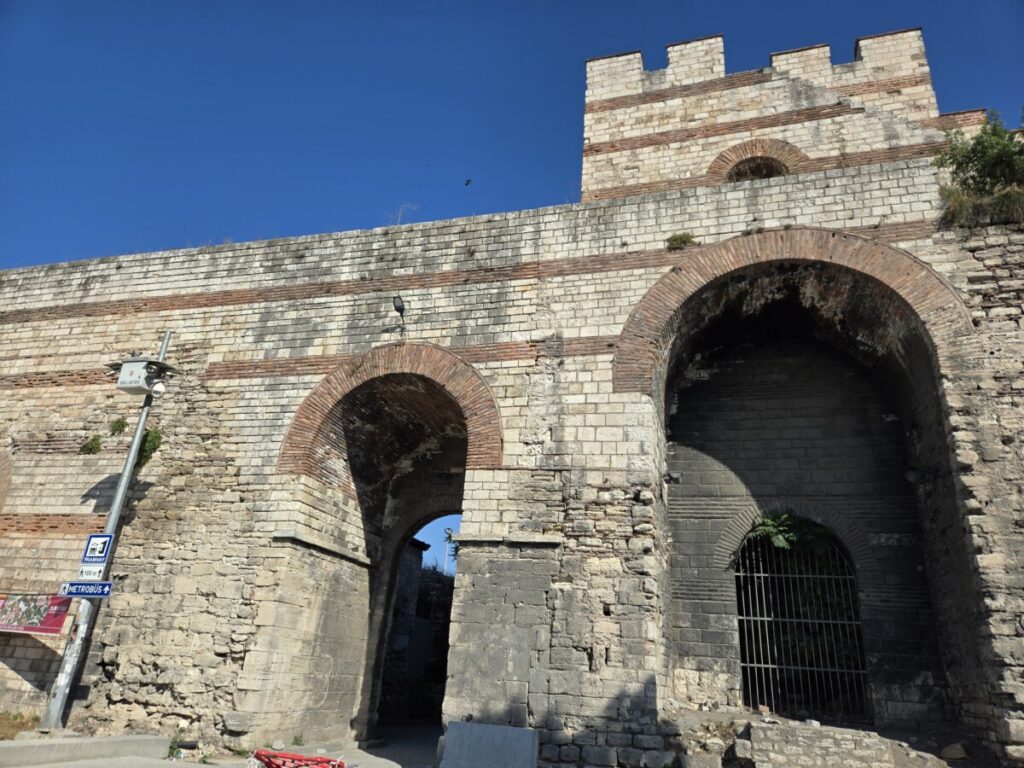
Walking along the walls in the morning thinking about how long they had been completely impregnable was a really sobering way to start the day.
From there, I took the Metro to the north side of the Golden Horn to Taksim Square. Regarded as the center of the city and the main hub of the train network, it also contains a monument to the founders of modern Turkey,
The square is connected to the old Genoese quarter, now called Karaköy, by a touristy shopping street with a quaint little tram line running up the center.
I’m glad I was here fairly early in the morning, because I’m 100% certain it was going to be batshit crowded later. At the bottom of the street is the Galata tower, which is a 7 story stone tower erected in 1348. The district at the time was a Genoese outpost, which the Byzantines PROBABLY didn’t want building things like towers and walls, but no longer really had the mojo to prevent.
Still, their loss is my gain, as the view from the top was great.
And I’m sure nothing bad happened as a result of the Byzantines becoming basically ineffectual even as close as just across the river from their capital.
After climbing back down, I explored more of the district, and eventually ended up at the Kılıç Ali Pasha Mosque. What’s amazing is that even though this Mosque was designed by one of the most famous architects in Ottoman history, and was located right next to the cruise ship port, I nonetheless had it almost entirely to myself.

And that made all the difference. While the Blue and Sultanahmet mosques may have been larger, the ability to appreciate this one quietly, and not surrounded by hordes of instagrammers, made my experience completely different.
At this point it was time to meet up with my friend from the client and go have Turkish meatballs. We went back to Sultanahmet, which is the main historical / tourist district on the south side of the Golden Horn, and I discovered the advantage of a local guide. Where there were literally dozens of kebap restaurants in the vicinity of the Hagia Sophia, my friend was able to walk right up to the correct one, and tell me the history of the family that had run it for something like nine generations.
He also knew about the secret parking lot behind the Blue Mosque.
Finally, he knew how to game the online ordering system and get Turkish resident prices for one of the other really impressive sites in the neighborhood, the Basilica Cistern. Constructed by the emperor Justinian as a water reservoir, (no matter what they said in “From Russia With Love”) it’s a spectacular underground space with vaulted ceilings and ornamental columns.
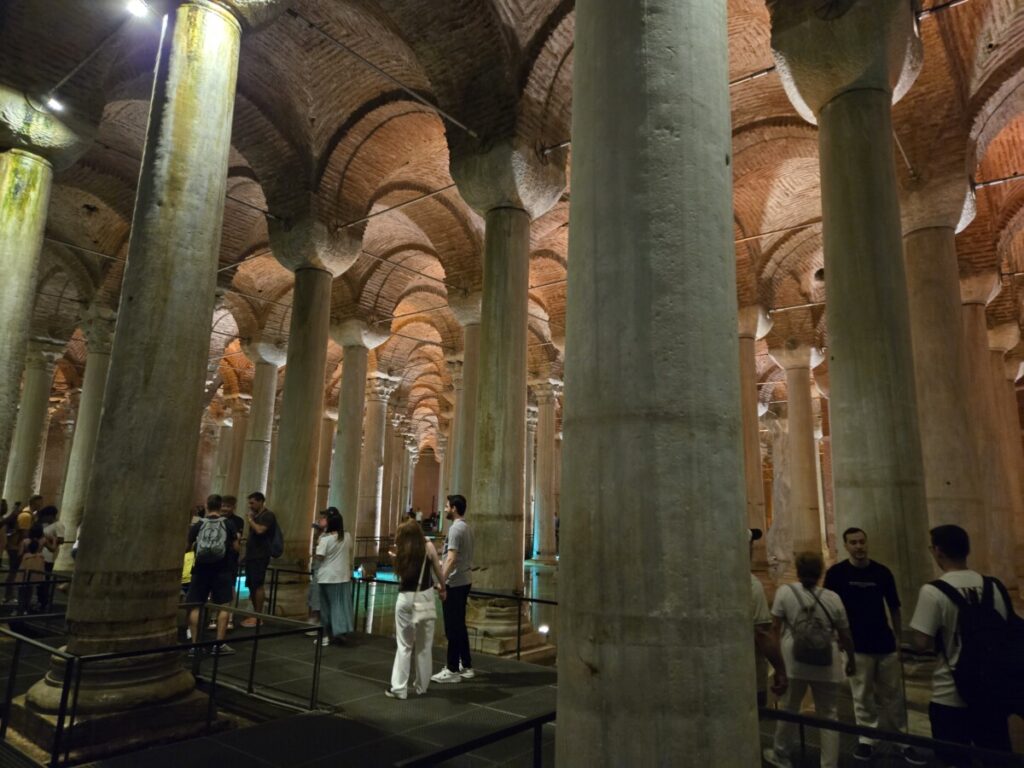
And how did they fill all these cisterns? Why, via an aqueduct, of course!
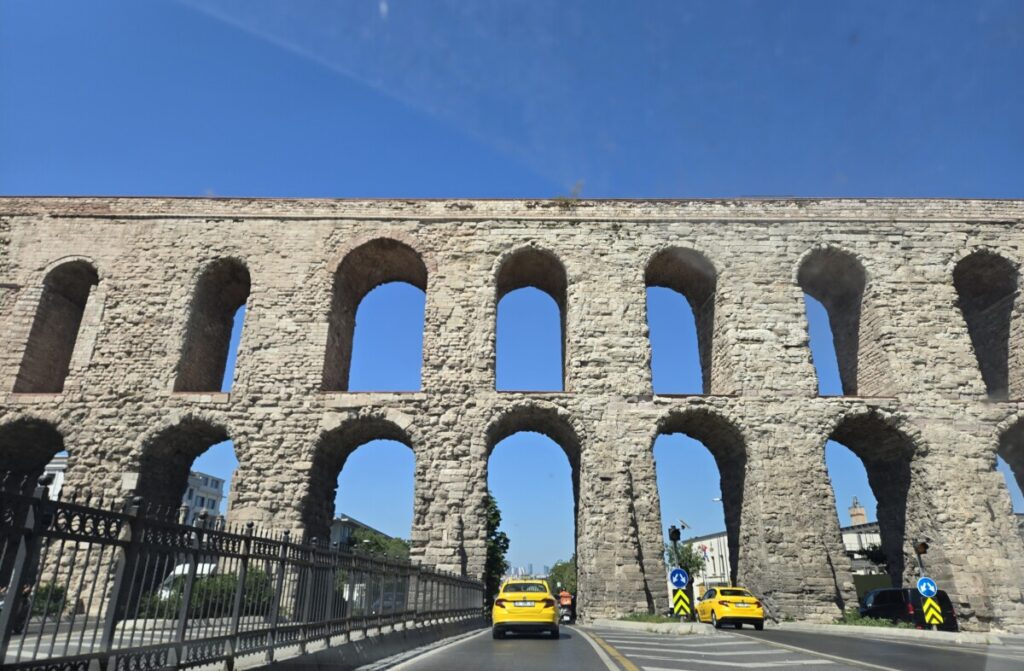
This is the Aqueduct of Valens. It was built in the year 373. We drove under it. I can’t even with this city.
Finally, I was taken to a brewery to try a local beer. It was an excellent Kolsch, and we hung out in a nice cool beer garden to drink it.
After I was returned to my hotel, I had an experience that I am absolutely kicking myself for not getting video of.
I returned to the rooftop restaurant for dinner (and once again had it completely to myself) It has a lovely view over the city, and at roughly 8:30, all of the mosques started broadcasting their call to prayer. Now, the call to prayer isn’t a recording, and it isn’t the same from mosque to mosque. Rather, it’s an amazing cacophony, with each mosque’s caller making their own plea for the faithful over generally quite powerful loudspeakers all at once. All of which blended together to blanket the city in sound.
The effect of which was slightly spoiled or possibly enhanced by additional layer of the bar’s sound system, which was playing a cover of “Blue (Da Ba Dee)” by Eiffel 65.

